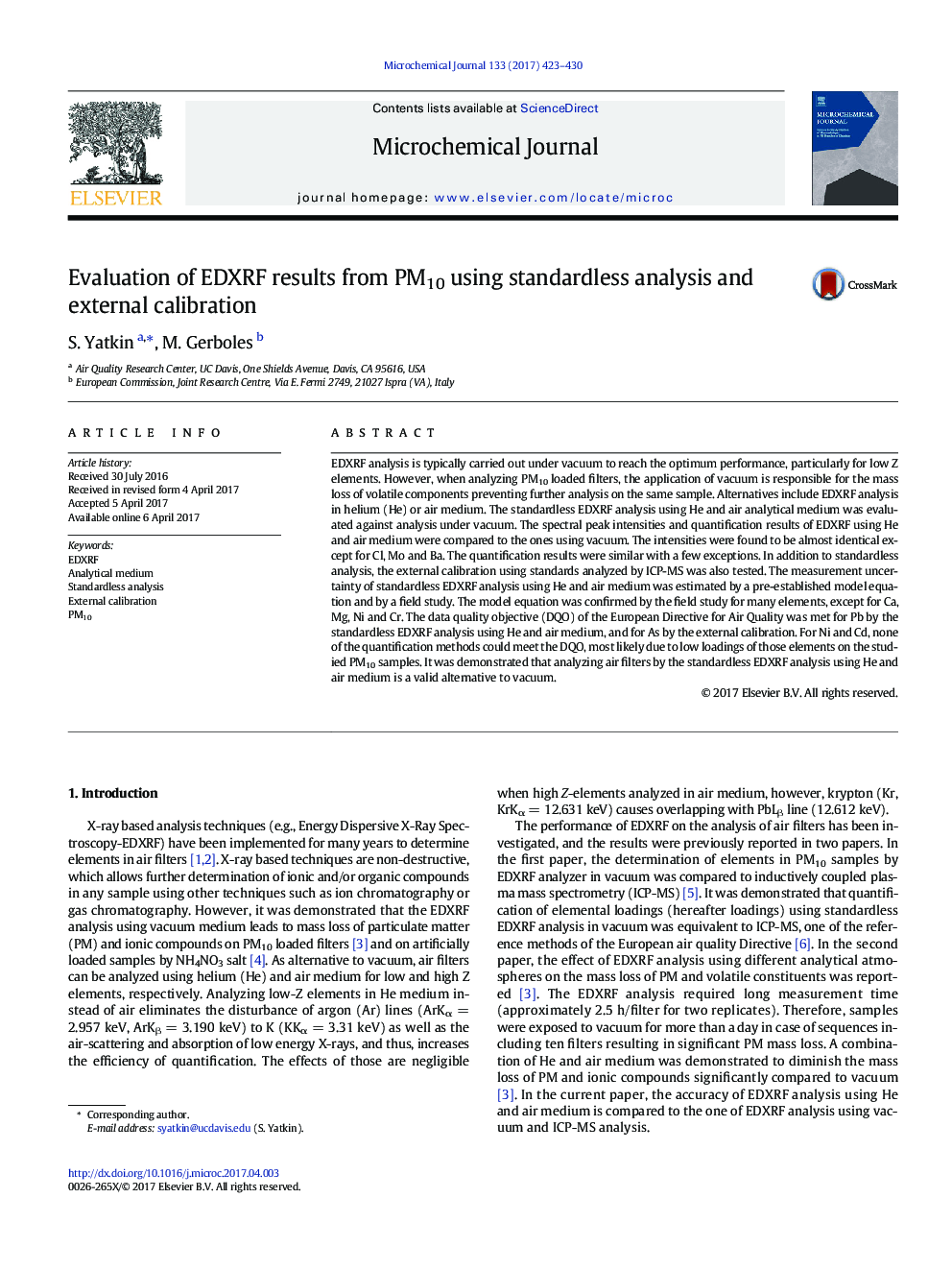| Article ID | Journal | Published Year | Pages | File Type |
|---|---|---|---|---|
| 5139050 | Microchemical Journal | 2017 | 8 Pages |
Abstract
EDXRF analysis is typically carried out under vacuum to reach the optimum performance, particularly for low Z elements. However, when analyzing PM10 loaded filters, the application of vacuum is responsible for the mass loss of volatile components preventing further analysis on the same sample. Alternatives include EDXRF analysis in helium (He) or air medium. The standardless EDXRF analysis using He and air analytical medium was evaluated against analysis under vacuum. The spectral peak intensities and quantification results of EDXRF using He and air medium were compared to the ones using vacuum. The intensities were found to be almost identical except for Cl, Mo and Ba. The quantification results were similar with a few exceptions. In addition to standardless analysis, the external calibration using standards analyzed by ICP-MS was also tested. The measurement uncertainty of standardless EDXRF analysis using He and air medium was estimated by a pre-established model equation and by a field study. The model equation was confirmed by the field study for many elements, except for Ca, Mg, Ni and Cr. The data quality objective (DQO) of the European Directive for Air Quality was met for Pb by the standardless EDXRF analysis using He and air medium, and for As by the external calibration. For Ni and Cd, none of the quantification methods could meet the DQO, most likely due to low loadings of those elements on the studied PM10 samples. It was demonstrated that analyzing air filters by the standardless EDXRF analysis using He and air medium is a valid alternative to vacuum.
Related Topics
Physical Sciences and Engineering
Chemistry
Analytical Chemistry
Authors
S. Yatkin, M. Gerboles,
